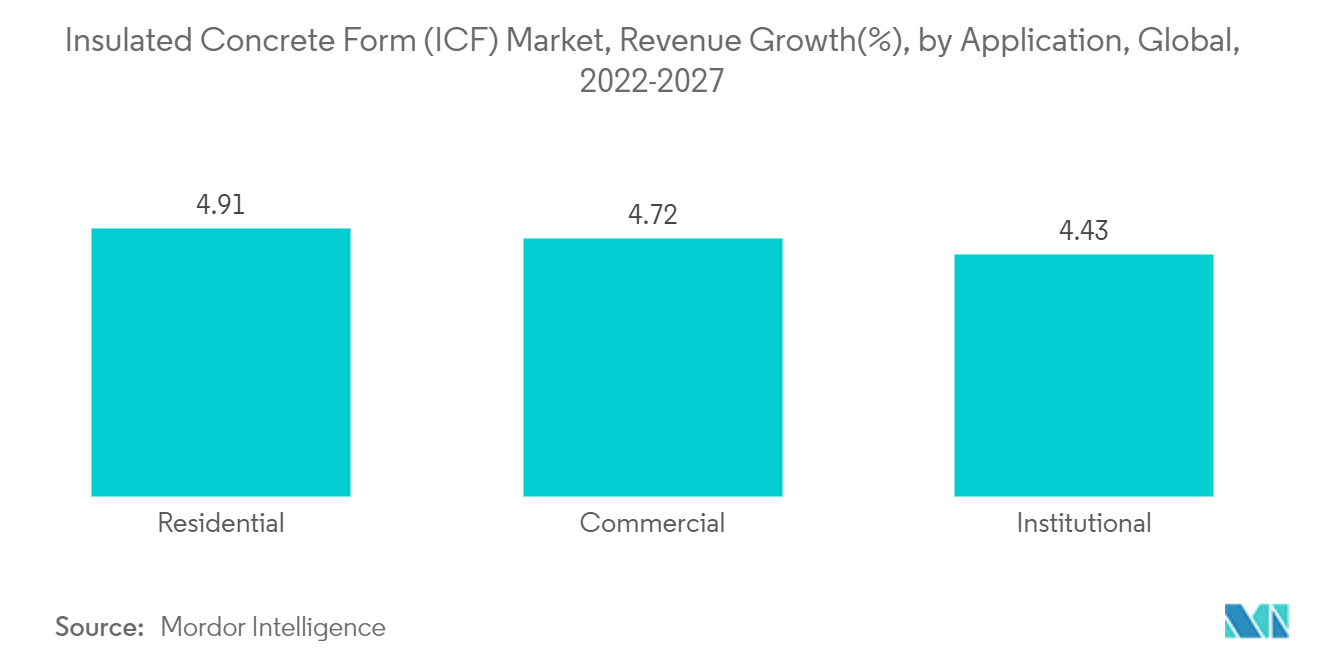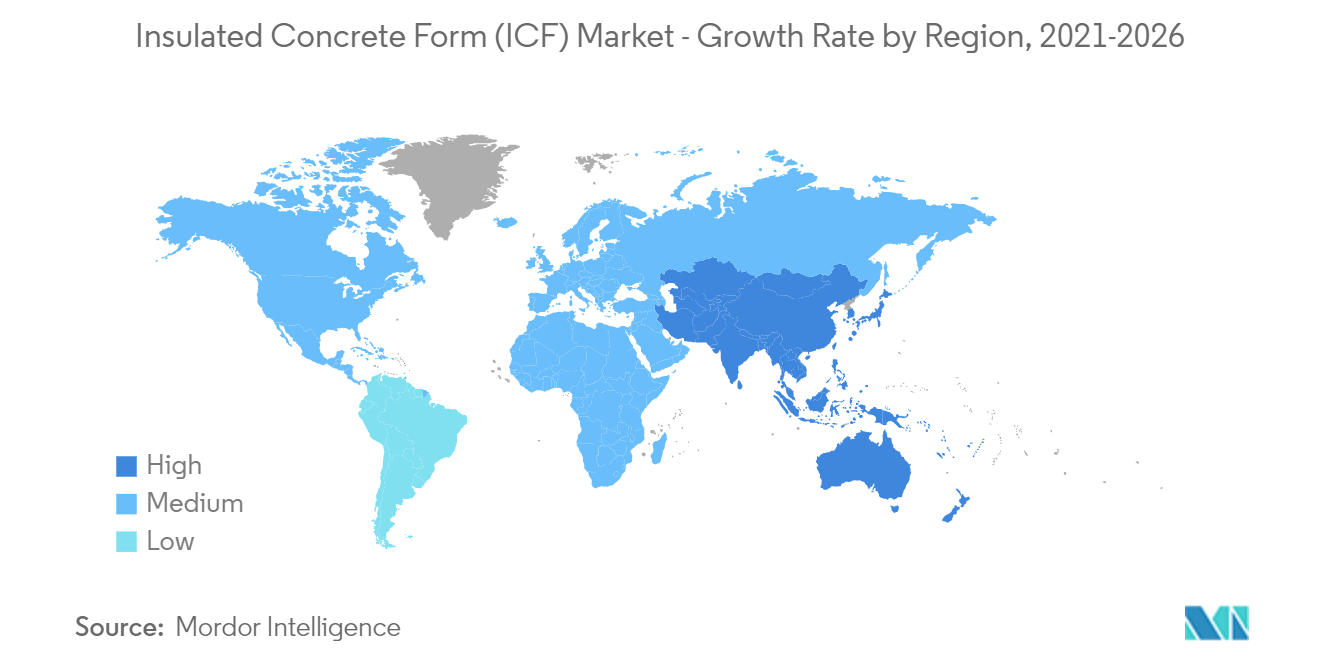Market Trends of Insulated Concrete Form (ICF) Industry
This section covers the major market trends shaping the Insulated Concrete Form Market according to our research experts:
Residential Segment to Dominate the Market
- The increasing number of building codes that demand energy efficiency has increased the number of ICF constructions in the residential sector.
- For instance, the new energy code in Canada demands continuous below-grade insulations in residential structures.
- The availability of ICF forms at a cheaper rate (compared to other alternatives), which provide similar efficiency, is driving the demand in the residential segment, especially in Canada and the United States.
- According to distributors and installers in the two major markets, the United States and Canada, most ICF home constructions are skewed toward high-end custom homes, and homeowners are driving the demand in terms of the number of projects.
- Multi-family homes contribute to the largest market growth in the residential sector. Furthermore, basement construction still makes up a significant portion of ICF residential construction works.
- According to the United States Census Bureau, the residential construction industry in the United States was valued at USD 929.7 billion in July 2022, compared to USD 815.5 billion in July 2021, registering a growth of 14%. Aging houses signal a growing remodeling market, as old structures normally need to add new amenities or repair/replace old components. Rising home prices in the country have also encouraged homeowners to spend more on home improvements.
- The Indian government has been actively boosting housing construction, as it aims to provide homes to about 1.3 billion people. The country is likely to witness ~USD 1.3 trillion of investment in the housing sector over the next seven years, and to witness the construction of 60 million new homes in the country. The availability of affordable housing in the country is expected to rise by around 70% by 2024.
- Various government projects in Canada, such as New Building Canada Plan (NBCP) and Affordable Housing Initiative (AHI), support the sector's growth. The residential and commercial sectors have been witnessing steady growth in the past few years. For instance, the Wellington Sur Le Bassin Condominium Tower project involves the construction of a 25-story condominium tower in Montreal, Quebec, for providing better residential facilities in the region. The construction work is projected to be complete by the end of 2024.
- In Germany, construction companies are benefiting from the soaring demand for real estate and increased investments in buildings. The upswing in construction has been encouraged by the European Central Bank's ultra-low interest rates, a growing urban population, and high immigration. The German government announced plans to construct around 1.5 million housing units. The overhang of pending residential building permits increased to more than 400,000, suggesting the growth of the sector.
- With the growing awareness and promotional campaigns held by various ICF organizations, the market for ICF in the residential sector is expected to grow over the forecast period.

Asia Pacific region is Expected to Dominate the Market
- In the Asia-Pacific, China is the largest economy in terms of GDP. China's real GDP grew by 2.2% in 2020 and by 8.1% in 2021, primarily driven by the consumer spending rebound post-pandemic. Furthermore, as per IMF forecasts, the country's GDP was estimated to grow by 3.2% in 2022.
- Major residential projects are coming up in the Asia-Pacific, such as Hamamatsucho Shibaura 1 Chome Redevelopment in Japan, Lohas Park Residential Development Phase XI in Hong Kong, etc.
- To contain the growing greenhouse gas predicaments in the country's major cities, the country's green building sector is expected to increase from 5% to 28% by 2030, representing a USD 12.9 trillion investment opportunity.
- The Housing Security Department of the Ministry of Housing and Urban Development in China announced the investment in residential construction to build 6.5 million affordable rental units that will be 'greener, smarter and safer' to reduce the housing pressure in 40 cities across China.
- In Japan, Shibaura 1-Chome Mixed-Use Complex is a construction project with an allotted budget of USD 500 million, which aims at providing commercial, residential, and leisure facilities in Minato City, Tokyo Japan. It is expected to be completed by the fourth quarter of 2030.
- Hence, all the abovementioned trends are projected to collectively influence the consumption of insulated concrete form (ICF) in the country over the forecast period.


